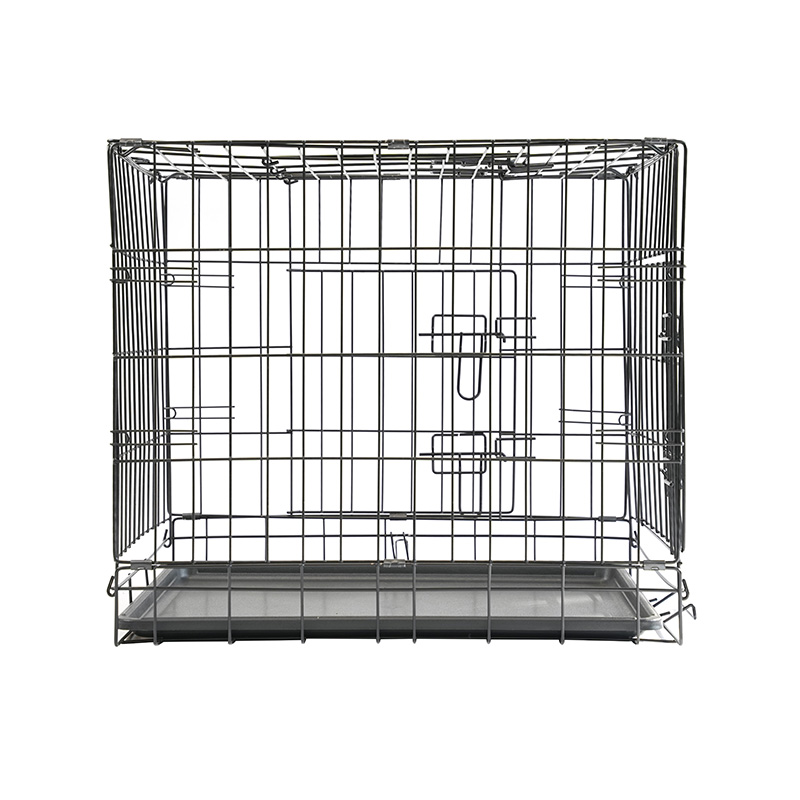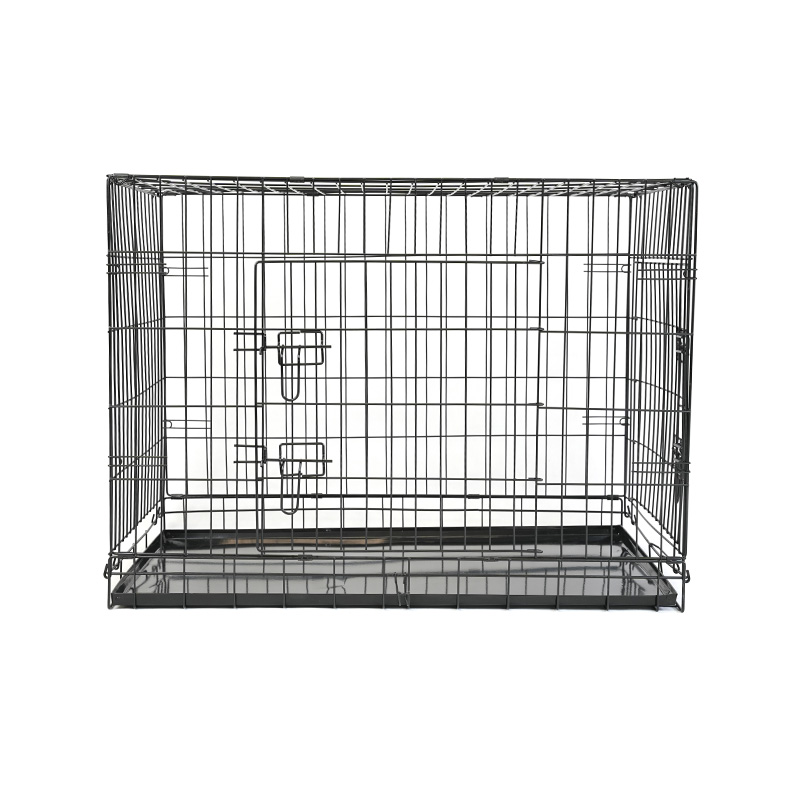- Type:
- Industry News
- Date
- 2025-Sep-01
How Can Pet Playpens Provide Safety and Convenience for Pets in Different Scenarios?
Why Pet Playpens Become an Important Guarantee for Safe Pet Activities
In the process of raising pets at home, pet playpens, as tools to restrict activity ranges and ensure safety, serve a role far beyond simple isolation. For curious pets such as puppies and kittens, playpens can prevent them from accessing dangerous areas—like kitchen knives and electrical outlets—reducing the risk of accidental injury. For pets in recovery, playpens provide a quiet space for recuperation, avoiding excessive movement that might hinder healing. Meanwhile, playpens help establish regular routines for pets, cultivating toilet habits through fixed activity areas, which is particularly beneficial for new pets adapting to their new environment. Compared to traditional cages, high-quality pet playpens usually offer more spacious and well-ventilated spaces with transparent views, preventing pets from feeling oppressed while meeting their activity needs—especially suitable for dogs requiring a certain amount of exercise. Additionally, the adjustability of playpens (such as folding and splicing) allows them to adapt to different home environments, whether it’s a corner of the living room, a balcony, or an outdoor lawn, making them an ideal choice for balancing pets’ freedom and safety.
Key Points for Arranging Indoor Playpen Spaces for Small Dogs
When setting up indoor playpens for small dogs, it’s essential to balance safety, comfort, and functionality, ensuring pets can move freely within the limited space. The first consideration is location selection: avoid air vents, direct air conditioning drafts, or windows with intense sunlight to prevent pets from getting cold or overheated. The optimal position is a quiet corner of the living room or bedroom, allowing owners to monitor their pets easily while letting the animals feel part of the family. The playpen size should be determined based on the dog’s adult size. For extra-small breeds like Chihuahuas and Yorkshire Terriers, the playpen should be at least 0.5 square meters (80cm×60cm) with a height of 50cm. For small breeds such as Schnauzers and Corgis, the area needs to be expanded to over 0.8 square meters with a height of no less than 60cm to prevent escape by jumping. The interior should be divided into functional zones: one side with a soft mat as a resting area and the other left open for activities. Food and water bowls should be placed in a corner away from the resting area to avoid contaminating the living environment with food residues. Additionally, toys like chew sticks and treat-dispensing balls can be included, but ensure they have no small parts (such as buttons or beads) to prevent accidental ingestion. The playpen door should feature a double-locking design to prevent pets from pushing it open, and door frame edges must be smooth with no sharp protrusions to avoid scratching pets’ noses or paws.
Stability Reinforcement Methods for Folding Pet Playpens Used Outdoors
Folding pet playpens, valued for their portability, are commonly used for outdoor activities with pets. However, uneven ground and wind can easily cause them to tip over, requiring scientific reinforcement methods. Ground fixation is crucial: on grass or mud, use the playpen’s built-in stakes (or homemade metal spikes) inserted diagonally through the bottom grid into the ground, with at least 2-3 stakes per side, each at least 15cm deep, forming a triangular structure to enhance wind resistance. On concrete or stone surfaces, place heavy objects (such as water-filled buckets or sandbags) at the bottom corners, each weighing over 5kg, arranged symmetrically to prevent tilting from uneven weight distribution. For multi-panel folding playpens, ensure each connecting pin is fully engaged, and use zip ties to cross-bind adjacent panels’ grids, reducing gap movement. In strong winds (such as in parks or by the sea), stretch an elastic cord horizontally across the top of the playpen, securing both ends to nearby trees or railings to create tension support, with the cord tight enough to slightly stress the playpen without deformation. Before use, inspect hinge wear—replace loose or broken clips promptly to prevent sudden collapse outdoors, which could lead to pets escaping.
Scientific Placement Distance Between Pet Playpens, Litter Boxes, and Food Bowls
The placement distance between litter boxes and food bowls inside pet playpens directly affects pets’ comfort and hygiene, requiring adherence to the “zoned isolation” principle. Litter boxes serve as excretion areas, while food bowls are for eating—they should be at least 80cm apart to prevent pets from refusing food due to the smell of waste. This is especially important for cats with sensitive noses, as proximity may reduce appetite or cause inappropriate elimination. In small playpens with limited space, a minimum 50cm gap is necessary, with partitions or mats creating physical separation for relatively independent zones. Food and water bowls should be adjacent (10-15cm apart) for easy access to water after eating but placed over 30cm from resting areas to avoid bedding contamination from crumbs or spills. Litter boxes should be positioned in playpen corners away from doors to provide privacy, with at least 20cm of space in front for unobstructed entry and exit. Additionally, clean food residues immediately after meals and replace litter daily to maintain cleanliness, preventing odor buildup in enclosed spaces that could harm pets’ health.
Suitable Height and Space Standards for Pet Playpens Based on Dog Sizes
Selecting appropriate pet playpens for different dog sizes requires height and space dimensions tailored to their activity levels and physical characteristics, preventing escapes due to insufficient height or restricted movement from cramped spaces. Small dogs (e.g., Poodles, Bichons) with adult shoulder heights of 25-40cm need playpens 50-60cm tall to prevent jumping escapes, with a minimum 0.5-0.8 square meters of space allowing turning, standing, and brief movement. Medium dogs (e.g., Samoyeds, Border Collies) with 40-60cm shoulder heights and strong jumping abilities require 80-100cm tall playpens and at least 1.5-2 square meters of space, accommodating lying, playing, and preventing anxiety from confinement. Large dogs (e.g., Golden Retrievers, Labradors) over 60cm tall, with great strength and high activity levels, need playpens at least 120cm tall to prevent climbing, plus 2.5+ square meters of space—preferably modular designs for expansion. Materials should be sturdy (e.g., thickened steel tubes, high-density plastic) to withstand collisions. Special breeds like Corgis (short-legged but powerful) need slightly taller playpens (70cm+), while escape-prone breeds like Shibas benefit from playpens with extended tops to reduce escape risks.
Maintenance and Cleaning Tips for Chew-Resistant Pet Playpen Materials
Chew-resistant pet playpen materials—such as nylon mesh, metal plating, and high-density polyethylene—require regular maintenance and cleaning to extend lifespan and maintain hygiene. For nylon or polyester fabric playpens, gently wipe surfaces with a soft brush dipped in neutral soapy water daily to remove saliva and dust, avoiding bleach-containing cleaners that cause brittleness and cracking. Rinse monthly with clean water; after drying, apply small amounts of pet-safe bitter spray to chew-prone areas (e.g., bottom edges) to reduce gnawing, ensuring the product is non-toxic and fully dry before allowing pet contact. For metal playpens (e.g., galvanized steel), wipe surfaces with a dry cloth to prevent rust. Remove minor rust with fine sandpaper, apply rust-inhibiting paint, and touch up with matching color paint for appearance. Regularly add a few drops of lubricant to metal hinges to prevent jamming or corrosion. Plastic playpens easily accumulate pet oils—wipe with diluted white vinegar (1:10 ratio) to remove grease and disinfect, avoiding prolonged sunlight exposure that causes aging and brittleness. Adjust cleaning frequency by usage: weekly for indoor playpens, immediate cleaning of mud and grass stains after outdoor use. Store folded neatly without heavy pressure to prevent deformation, ensuring long-term chew resistance.


 Inquiry
Inquiry

 English
English 中文简体
中文简体 Deutsch
Deutsch





